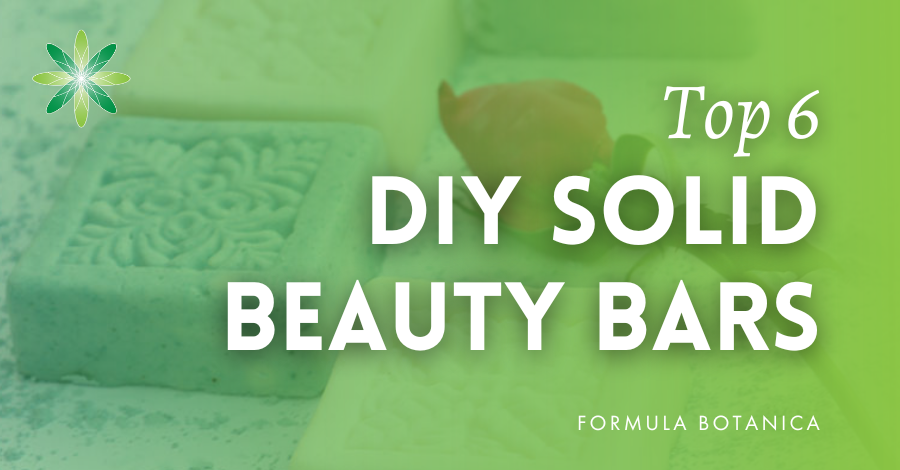Every organic skincare or haircare formulator knows that blissful feeling when a formula comes together. You designed the product, you manufactured it and it looks, smells and feels wonderful. However, before you can sell your organic skincare product, you need to test its stability. Stability testing offers you the only way to know for sure that your product is safe and to determine its shelf life.
In fact, we feel so strongly that stability testing is a necessity for you, your formulations, your brand and your customers, that we’ve summarised 3 reasons why you must stability test your organic skincare or haircare product:
1. Stability Testing Protects your Formulation’s Safety
Your skincare products need to be safe for use. Before you decide that your formulation is ready for sale, you need to be really sure the product is and will be safe at least until its expiry date.
Organic skincare is made without the usual synthetic preservatives that are generally known to be very stable. Our organic lotions, creams, masks and cleansers often contain botanical and herbal extracts, such as leaves, flowers, seeds and oils, which can be harder to keep stable in a formulation (Read: 4 Signs of Cosmetic Product Instability).
For that reason, most botanical formulations tend to have a shorter shelf life and can be more prone to contamination. A couple of months more or less can make the difference for a retailer to want to sell your product or not.
Stability testing helps you to predict the shelf life of your formulations and gives you the certainty your product is safe from unwanted changes and contamination. #CosmeticScience #GreenBeauty Share on X
2. Stability Testing Protects your Brand’s Reputation
Your formulation is part of your identity as a brand. Almost every year the news reports a product recall by a brand due to improper testing (Read: The Liz Earle re-call: When even phenoxyethanol fails). Can you imagine the devastating effect a headline such as ‘Organic skincare product X recalled because 5,000 units of lotion separated?’.
The reputation damage doesn’t need to be as big as hitting the news: it can be smaller and closer to home. If you ever opened a product where the emulsion separated, you will never buy something of that brand again. Especially in a world with social media, this is something you don’t want to happen.
3. Stability Testing Helps with Legal Compliance
Rules differ all over the world and although stability testing is good practice, it isn’t mandatory everywhere. Cosmetic stability testing is a required part of the Cosmetic Product Safety Report that is needed to sell your cosmetic product in the EU. The cosmetic laws in South Asian countries (and others) mimic the laws of the EU.
In other parts of the world this isn’t regulated like in the EU, but sometimes microbiological testing is mandatory when your product contains or comes into contact with water (Listen to our podcast: How to comply with the EU Cosmetics Regulations).
We encourage you to comply with the toughest regulations because it gives you the chance to sell your products globally. You are then also prepared for changing regulations in your own part of the world.
Stability testing isn’t just something you do to comply with the law; it is what you do because you are a professional formulator. Protect your customer, reputation and business and challenge your products through rigorous stability testing.
Learn how to protect your formulations, your brand and your customers by enrolling for our online Certificate in Cosmetic Stability Testing.
FAQs
What is stability testing in cosmetics?
Cosmetics’ stability testing is a set of test carried out to determine the effective lifespan of a cosmetic product in a safe, stable state that also meets consumer expectations of the product. Stability testing procedures include a cycle of controlled and measurable tests such as rapid freezing and thawing of the product and its heating to around 45 degrees centigrade for a set period of time. These kind of tests will show any undesirable changes in the intended state of a cosmetic, such as changes to its viscosity, colour and scent, and determine if the changes affect its safety and efficacy.
Stability tests are the only reliable method to determine the best before dates and period after opening (PAO) statements that are legally required on consumer cosmetics in most part of the world. The PAO is indicated by an open jar symbol with the requisite number of months indicated inside the symbol. Stability testing can be performed by brands themselves and unlike microbial challenge and safety tests, do not necessarily need to be carried out by a professional laboratory. Stability testing can be a self certified procedure.
How much does cosmetic stability testing cost?
The cost of cosmetic stability testing varies widely across the world and if you are looking to find a test provider, shop around and compare their pricing. Some laboratories will offer discounts on multiple products and also on variations to a base, foundation cosmetic formulation, such as a soap or body lotion, that has different fragrances across a range. Expect to pay in the region of US$ 100-200 per product though this is a rule of thumb and will vary.
Where can I learn to formulate natural skincare and haircare?
Join us at Formula Botanica, where tens of thousands of students and followers take our free and paid online courses to learn how to formulate organic skincare and haircare for themselves or to sell and also how to set up a beauty brand and business.
Leave us a comment

Priscilla Rolvers is a herbalist and natural cosmetic formulator and is based in the Netherlands. She was a grading tutor at Formula Botanica from 2017-19. Read more about the Formula Botanica Team.



























